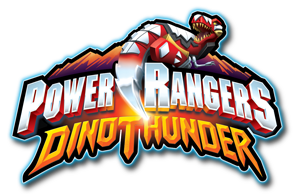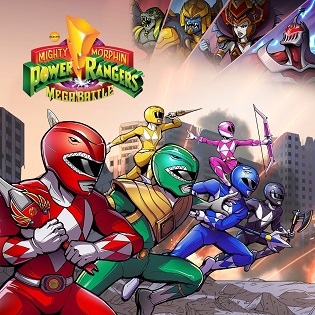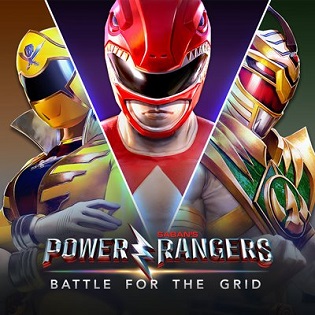
Mighty Morphin Power Rangers (MMPR) is an American superhero television series that premiered on August 28, 1993, on the Fox Kids programming block. It is the first entry of the Power Rangers franchise, and became a 1990s pop culture phenomenon along with a large line of toys, action figures, and other merchandise. The show adapted stock footage from the Japanese TV series Kyōryū Sentai Zyuranger (1992–1993), which was the 16th installment of Toei's Super Sentai franchise. The second and third seasons of the show drew elements and stock footage from Gosei Sentai Dairanger and Ninja Sentai Kakuranger, respectively, though the Zyuranger costumes were still used for the lead cast in these two seasons. Only the mecha and the Kiba Ranger costume from Dairanger were featured in the second season while only the Kakuranger mecha was featured in the third season, though the Kakuranger costumes were later used for the mini-series Mighty Morphin Alien Rangers. The series was produced by MMPR Productions and distributed by Saban Entertainment, while the show's merchandise was produced and distributed by Bandai Entertainment.

Power Rangers Dino Thunder is the twelfth season of the television series, Power Rangers. This incarnation of Power Rangers was based on Bakuryū Sentai Abaranger, the 27th entry of Toei Company's long-running Super Sentai franchise. Dino Thunder was also the subtitle of the Korean dub of Abaranger in South Korea and had a similar/identical logo to the American version as well. The series is notable as it features the return of Jason David Frank as Tommy Oliver as a main character and a dinosaur theme for the powers, abilities and assets from most of the series' protagonists and antagonists. It was the first series to be aired on ABC Family part of ABC as well as part of Jetix on Toon Disney.

Mighty Morphin Power Rangers: The Movie is a 1995 American superhero film. It stars the ensemble cast of Karan Ashley, Johnny Yong Bosch, Steve Cardenas, Jason David Frank, Amy Jo Johnson, and David Yost alongside the villains cast from the original series and Paul Freeman as Ivan Ooze. Much like the television season that followed the release, it used concepts from the Japanese Super Sentai series Kyōryū Sentai Zyuranger, Gosei Sentai Dairanger and Ninja Sentai Kakuranger. It is the first Power Rangers production from Saban Entertainment not to feature any archived footage from Super Sentai. It is the first installment in the Power Rangers film series. The film was released in between the second and third seasons of Mighty Morphin Power Rangers, but is incompatible with season three, which provides a different explanation for the Rangers gaining their Ninja Ranger powers and Ninjazords, indicating they are set in different continuities.

Teenage Mutant Ninja Turtles: Tournament Fighters, or Teenage Mutant Hero Turtles: Tournament Fighters in Europe, is the title of three different fighting games based on the Teenage Mutant Ninja Turtles, produced by Konami for the Nintendo Entertainment System, Sega Genesis, and Super NES and released during a period between 1993 and 1994. Konami produced a different fighting game based on the franchise each featuring a differing cast of characters for the platforms. All three versions of the game were re-released as part of Teenage Mutant Ninja Turtles: The Cowabunga Collection in 2022. with online play using rollback netcode for the SNES version of the game.

Street Fighter III: 2nd Impact - Giant Attack is a competitive fighting game produced by Capcom that was released as a coin-operated arcade game in 1997. It is an update of Street Fighter III: New Generation. Like its predecessor, it runs on the CP System III hardware. 2nd Impact introduced new gameplay mechanics, new characters, and new special moves. The game also brings back bonus rounds, not seen in the series since Super Street Fighter II. It is also the only CPS3 title to have a widescreen feature.
Gundam: The Battle Master, later known as Battle Assault, is a series of fighting games released for the PlayStation, PlayStation 2 and Game Boy Advance. The series features mobile suits from several eras of the Gundam metaverse and some non-traditional fighting game elements. Every entry was developed by Bandai in co-operation with Japanese developer Natsume, who also made the 1996 Shin Kidō Senki Gundam Wing: Endless Duel.

Power Rangers Lightspeed Rescue is a video game based on the 8th season of the TV series Power Rangers Lightspeed Rescue. Four distinct versions of the game were produced for Mac OS/Windows, Game Boy Color, Nintendo 64, and PlayStation.

Mighty Morphin Power Rangers is the title of five different video games based on the first season of the television series of the same name, one for each of the following game platforms: Sega Genesis/Mega Drive, Super Nintendo Entertainment System, Game Boy, Game Gear, and Sega CD. The Nintendo versions of the game were released by Bandai, while the Sega versions were published by Sega itself and the production of the cartridge versions was carried by Banpresto, a pseudonym of Bandai. The Green Ranger is only playable on the Genesis and Game Gear versions of the game.

Mighty Morphin Power Rangers: The Movie is the title of four different video game adaptations of the film of the same name which were released for the Super NES, Genesis, Game Boy, and Game Gear. While the games are ostensibly based on the film, they also feature characters and plot elements from the second season of the original TV series. Like the previous game versions of the original Mighty Morphin Power Rangers, none of the four versions of the movie game are ports of each other.

Power Rangers: Super Legends is a 2007 action-adventure game based on the television franchise Power Rangers. It was released on October 23, 2007, for the Nintendo DS and on November 6, for the PlayStation 2 and for Microsoft Windows.

Super Gem Fighter Mini Mix, also released as Pocket Fighter, is a 1997 fighting video game produced by Capcom for the CPS II arcade system. The game uses the same super deformed character designs previously used in Super Puzzle Fighter II Turbo, a puzzle game by Capcom. It was ported in 1998 to the PlayStation, which retained the Pocket Fighter title for its North American and PAL releases, and then the Sega Saturn and WonderSwan, both in Japan only.

Goldar is a fictional character from the television series Mighty Morphin Power Rangers. A powerful yet overconfident warrior that serves under the command of Rita Repulsa and Lord Zedd, he is one of the chief antagonists of the titular protagonists in the show's first three seasons. Goldar is based on the Kyōryū Sentai Zyuranger villain Grifforzar.

Power Rangers: Legacy Wars is a fighting video game based on the 2017 film Power Rangers, created by San Francisco–based game developer nWay with characters from the movie and the TV show. The game was featured on Amazon, Apple's AppStore and Google Play Store. The game has been downloaded more than 50 million times.

Mighty Morphin Power Rangers: Mega Battle is a beat 'em up video game based on the Mighty Morphin Power Rangers television series, developed by Peruvian studio Bamtang Games. It was first announced in October 2016. It was released on January 17, 2017. The game never received a physical release and is only available via digital download.

Power Rangers: Battle for the Grid is a fighting game developed by San Francisco-based game developer nWay, featuring characters from the Power Rangers franchise. It was released digitally for Nintendo Switch and Xbox One on March 26, 2019, for PlayStation 4 on April 2, 2019, for Microsoft Windows on September 24, 2019, and for Stadia on June 1, 2020. Limited Run Games released a standard physical version on the Switch and PlayStation 4 alongside a more expensive Mega Edition, which included a SteelBook case, 18" X 24" poster, and 5 coins in addition to the game. Pre-orders went up for sale in June 2019 with the game delivered in November 2019. In October 2020, Maximum Games published the "Collector's Edition" which included the character Lauren Shiba, both physically and digitally. A third version the Super Edition containing all previous downloadable content was released digitally in May 2021 and physically in August 2021.

Shin Kidō Senki Gundam Wing: Endless Duel is a 1996 fighting video game developed by Natsume Co., Ltd. and published in Japan by Bandai for the Super Famicom. It is the first game to be based on the Mobile Suit Gundam Wing anime series. Set in the year After Colony 195, players take control of a pilot from the Colony Liberation Organization or the Organization of the Zodiac. Its gameplay consists of one-on-one fights, with a main four-button configuration, featuring special moves, as well as three playable modes.

Gundam: Battle Assault is a 1998 fighting video game developed by Natsume Co., Ltd. and published by Bandai for the PlayStation. Based on the Gundam franchise, it is a follow-up to Gundam: The Battle Master (1997), which was released only in Japan. The plot involves Heero Yuy, protagonist of Mobile Suit Gundam Wing and pilot of the XXXG-01W Wing Gundam, on a mission to destroy remaining enemy Mobile Suits under command of Treize Khushrenada to stop a war from starting. Its gameplay consists of one-on-one fights, with a main six-button configuration, featuring special moves and two playable modes, while players can select any available mech to battle against enemies in story mode.

Gundam: Battle Assault 2 is a 2002 fighting video game developed by Natsume Co., Ltd. for the PlayStation. Based on the Gundam franchise, it is a follow-up to Gundam: Battle Assault (1998). The story is divided into three storylines following a pilot from Mobile Fighter G Gundam, Mobile Suit Gundam Wing and Mobile Suit Gundam. Its gameplay consists of one-on-one fights, with a main six-button configuration, featuring special moves and two playable modes, while players can select any available mech to battle against enemies in story mode.

GigaBash is a brawler game developed and published by Malaysian independent studio Passion Republic Games. It was released for Microsoft Windows, PlayStation 4 and PlayStation 5 on August 5, 2022. It was also released for Nintendo Switch, Xbox One and Xbox Series X/S on August 4, 2023.



















